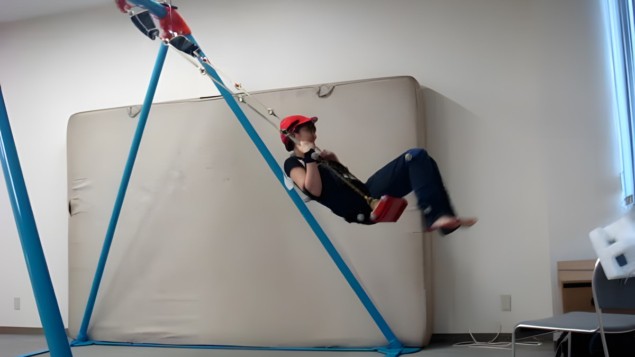
A trip to the park is always fun, for adult and child alike. One of the most popular pieces of apparatus is often the swing and many children quickly learn how to “pump” a swing by thrusting their legs out on the downswing and then tucking their legs in as they reach the top of the swing.
Previous work looking into the physics of the swing failed to characterize people’s upper body movements, which can be important given that the arms and back can also influence the amplitude of the swing.
Chiaki Hirata from Jumonji University in Japan and colleagues have now tackled this problem by building a mathematical model that describes upper-body movements during the swinging process. They compared their simulations with observations of 10 people pumping swings with different chain lengths of 1.61, 1.81 and 2.01 m.
Leaning back
They found that if the swinging amplitude is small, like when the activity starts, upper body motion is more effective if the person leans back when the swing is vertical to the ground. But when the swinging amplitude is large, the pumping works best if the person leans back at the cusp of when the swing starts to move forward again.
But every child knew that anyway.
The next entry in the Red Folder is definitely not for children, so if you are under 18 please stop reading now. Two researchers at the UK’s University of Sussex have created what they say is the first mathematical model that describes how people reach sexual climax.
According to a press release from the university, Konstantin Blyuss and Yuliya Kyrychko have “combined decades of data on physiological and psychological arousal to model the optimum conditions to achieve orgasm”.
At the risk of coming across as a bit of a prude, I think I might stop there and direct interested readers to a paper that describes the research. It’s called “Sex, ducks, and rock “n” roll: Mathematical model of sexual response” and it can be read free of charge.
- SEO Powered Content & PR Distribution. Get Amplified Today.
- Platoblockchain. Web3 Metaverse Intelligence. Knowledge Amplified. Access Here.
- Source: https://physicsworld.com/a/the-physics-of-playground-swings-mathematicians-model-sexual-response/



